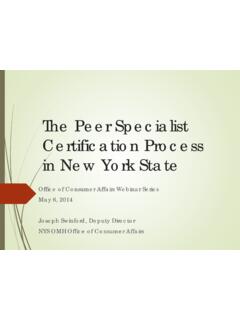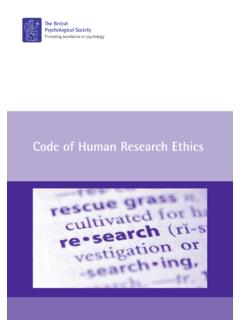Transcription of Safe Upper Levels for Vitamins and Minerals
1 Safe Upper Levels for Vitamins and Minerals May 2003. Expert Group on Vitamins and Minerals Contents Foreword 3. Executive Summary and Conclusions 5. Introductory Chapters 9. 1. Background to the establishment of the EVM 10. 2. About the EVM 13. 3. Methods 15. 4. The assessment of micronutrients 21. 5. General principles for assessing micronutrients 27. 6. EVM risk assessments and how to interpret them 30. 7. Public consultation 33. Risk Assessments 36. Part 1 Water Soluble Vitamins Biotin 36. Folic acid 42. Niacin (nicotinic acid and nicotinamide) 52. Pantothenic acid 62. Riboflavin 68. Thiamin 74. Vitamin B6 81. Vitamin B12 93. Vitamin C 100. Part 2 Fat Soluble Vitamins Vitamin A 110. -Carotene 127. Vitamin D 136. Vitamin E 145. Vitamin K 154. Part 3 Trace elements Boron 164. Chromium 172. Cobalt 180.
2 Copper 187. Germanium 197. Iodine 203. Manganese 213. Molybdenum 219. Nickel 225. Selenium 232. Tin 240. Vanadium 246. Zinc 253. Part 4 Minerals Calcium 264. Fluoride 274. Iron 275. Magnesium 287. Phosphorus 293. Potassium 299. Silicon 306. Sodium chloride 1. 303. Sulphur 320. Annexes to the Report: 1. Membership of the Expert Group on Vitamins and Minerals 322. and details of the Secretariat 2. Assessment of information 324. 3. Information submitted to the EVM 334. 4. Current usage of vitamin and mineral supplements (VMS) in the UK 335. 5. Members' interests 343. 6. Consultation list respondents 346. 7. Abbreviations 349. 8. Glossary 351. Foreword The Expert Group on Vitamins and Minerals first met in 1999 to consider the safety in long-term use of vitamin and mineral supplements sold under food law with a view to recommending maximum advisable Levels of intake.
3 Since then it has endeavoured to work as openly as possible. Thus, its agendas and working papers have been freely available, and observers, nominated by Interest groups, took a full part in reviewing pertinent evidence, all with the objective of ensuring as full and balanced a review of evidence as was practicable. In keeping, the draft report was then made freely available for comment, so giving a second opportunity to ensure all relevant evidence was addressed, and addressed properly. As a result of that consultation in the autumn of last year significant modifications were made to the draft. The determination of Safe Upper Levels or if that was not possible, Guidance Levels of intake had, of necessity, to take account of the possible effects on potentially susceptible individuals who could freely obtain Vitamins and Minerals and take them on a long-term basis.
4 This implied that good quality large studies of appropriate duration were needed. The group could only work within the confines of existing evidence, and robust conclusions depended on the availability of adequate and relevant data, but in many cases the necessary information was incomplete. The final version of the report was agreed unanimously by members, it will be for others to decide if our recommendations, which are, in essence, risk assessments, should be followed by the adoption of altered risk management strategies. In this context it should be emphasised that our recommendations do not address the medicinal uses of Vitamins and Minerals , which lie within the remit of the Medicines and Healthcare products Regulatory Agency. I am extremely grateful to the members of the group for bringing us to logical and consistent conclusions, to the observers for their support in ensuring that all relevant data were properly considered, and to the secretariat for their unflagging contribution in bringing to completion a task that was more complex and took far longer to complete than expected.
5 PROFESSOR MICHAEL LANGMAN. CHAIRMAN. 3. 4. Executive Summary and Conclusions Executive Summary and Conclusions The Expert Group on Vitamins and Minerals (EVM) is an independent expert advisory committee which was asked to advise on safe Levels of intakes of Vitamins and Minerals in food supplements and fortified foods. The EVM was asked to consider only Vitamins and Minerals sold under food law. Review of nutritional or non-nutritional beneficial effects or non nutritional use in medicines was outside the terms of reference of the group. The use of Vitamins and Minerals in medicines is within the remit of the Medicines and Healthcare products Regulatory Agency (MHRA). The EVM considered a detailed review of the relevant evidence for each substance and then a risk assessment which was based on this evidence.
6 The detailed reviews covered both nutritional and toxicological information. Thirty-four substances were assessed in detail. Safe Upper Levels (SULs) were recommended for eight Vitamins and Minerals and guidance was issued for twenty-two. Recommendations for SULs made by the EVM depend on the availability of good data on both the nature and the frequency of adverse effects detected at different Levels of intake. The database supporting the safety-in-use of Vitamins and Minerals is generally poor. There is a particular lack of reasonable-sized, well-designed comparative human studies of significant duration at different Levels of intake, and with adequate assessment of possible adverse effects. Moreover, there has rarely been adequate consideration of potentially vulnerable population sub-groups such as children or older people.
7 For some nutrients the EVM had to rely on animal data, with the use of empirical uncertainty factors in order to allow the extrapolation of the data to humans. For some Vitamins and Minerals the animal data were too limited for this purpose. As a consequence, the ability to give clear advice on SULs was often compromised and, in many cases, the EVM considered the evidence base inadequate to set a SUL. In such cases, and where possible, Guidance Levels have been given instead. These are based on very limited data; Guidance Levels must not be confused with, or used as, SULs. The determination of SULs or Guidance Levels entails the determination of doses of Vitamins and Minerals that potentially susceptible individuals could take daily on a life-long basis, without medical supervision in reasonable safety.
8 The setting of these Levels provides a framework within which the consumer can make an informed decision about intake, having confidence that harm should not ensue. The Levels so set will therefore tend to be conservative, and it is possible that for some Vitamins and Minerals larger amounts could be consumed for shorter periods without risk to health. However, there would be difficulties in deriving SULs for shorter term consumption because the available data are limited and relate to differing time periods. Although less susceptible individuals might be able to consume higher Levels without risk to health, separate advice for susceptible individuals would be appropriate only if those individuals could recognise their own potential susceptibility. The data were adequate to establish SULs for vitamin B6 (page 81) -carotene (page 127), vitamin E (page 145), boron (page 164), copper (page 187), selenium (page 232), zinc (page 253).
9 And silicon (page 306). Guidance was given for biotin (page 36), folic acid (page 42), niacin (page 52), pantothenic acid (page 62), riboflavin (page 68), thiamin (page 74), vitamin B12 (page 93), vitamin C (page 100), vitamin A (page 110), vitamin D (page 136), vitamin K (page 154), chromium (page 172), cobalt (page 180), iodine (page 203), manganese (page 213), molybdenum (page 219), nickel (page 225), tin (page 240), calcium (page 264), iron (page 275), magnesium (page 287), phosphorus (page 293) and potassium (page 299). 6. Expert Group on Vitamins and Minerals 2003. The data were inadequate to establish either SULs or guidance for germanium (page 197), vanadium (page 246) and sodium chloride (page 313). Two Minerals were not considered in detail: sulphur was excluded because intake is mainly as amino acids; fluoride was excluded as supplements are only available as licensed medicines, and fortification of food as a public health measure was not within the terms of reference of the EVM.
10 The EVM was not asked to consider the beneficial effects of the Vitamins and Minerals . Nutritional need was noted and SULs were not set at a level below dietary requirements. Some trace elements available in food supplements are unnecessary for human nutrition. Food supplement products are used by consumers in a number of ways; these may include a desire to improve the perceived nutritional quality of their diet or self-medication (either as prophylaxis or treatment) for a range of symptoms or conditions. The remit of the EVM was to consider supplements sold under food law, thus, the non-nutritional efficacy of Vitamins and Minerals has not been considered since such effects would be classified as medicinal and would be within the remit of the Medicines and Healthcare products Regulatory Agency.


